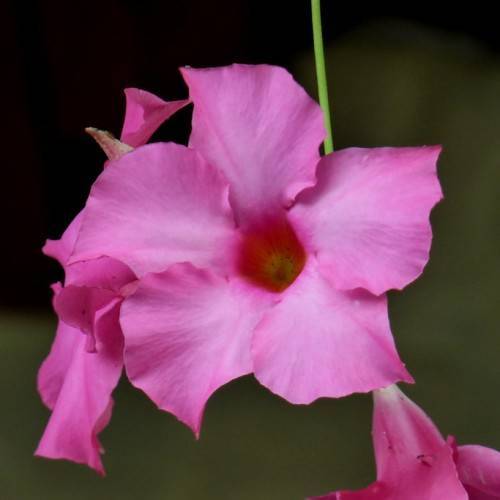
shining mandevilla
Mandevilla splendens
Also Known As - pink mandevillaCycle:
Perennial
Watering:
Average
Hardiness Zone:
4
Flowers:
Flowers In Spring
Sun:
Full sun, Part sun/part shade
Soil:
Acidic, Well-drained
Fruits:
Fruits In Autumn Ready In
Edible:
Yes
Leaf:
Yes
Growth Rate:
Moderate
Drought Tolerant:
Yes
Thorny:
Yes
Invasive:
Yes
Care Level:
Medium
watering
Generally, the European crabapple should be watered on a regular basis when the soil is slightly dry. During spring and summer months, water the crabapple every 10 to 14 days in order to ensure it gets just enough water. During the fall and winter, water approximately once every 2 to 4 weeks. Be careful to not overwater the plant, as too much water can lead to the plant's death. Make sure the soil drains well and does not accumulate any standing water.
sunlight
European crabapple (Malus sylvestris) is best suited for full sun, meaning 6 or more hours of sunshine per day. The species prefers direct sunlight from early morning until late afternoon throughout the growing season. In the winter, however, it can tolerate limited amounts of direct sunlight and will even benefit from bright, indirect light. When first planting, try to give the tree 8-9 hours of sun during the early spring and summer months to ensure it has the maximum chance of producing healthy blooms and fruit.
pruning
European crabapple should be pruned in late winter or early spring, prior to buds beginning to swell. In order to promote a healthy, full appearance, remove dead, damaged, and crossing branches. If necessary, thin the interior of the canopy to increase airflow. Remove any suckers or watersprouts growing at the base of the trunk. It is not necessary to do extensive pruning, as European crabapple does not require much maintenance. Be sure to avoid pruning after late spring, as this could stimulate excessive, unchecked growth.
